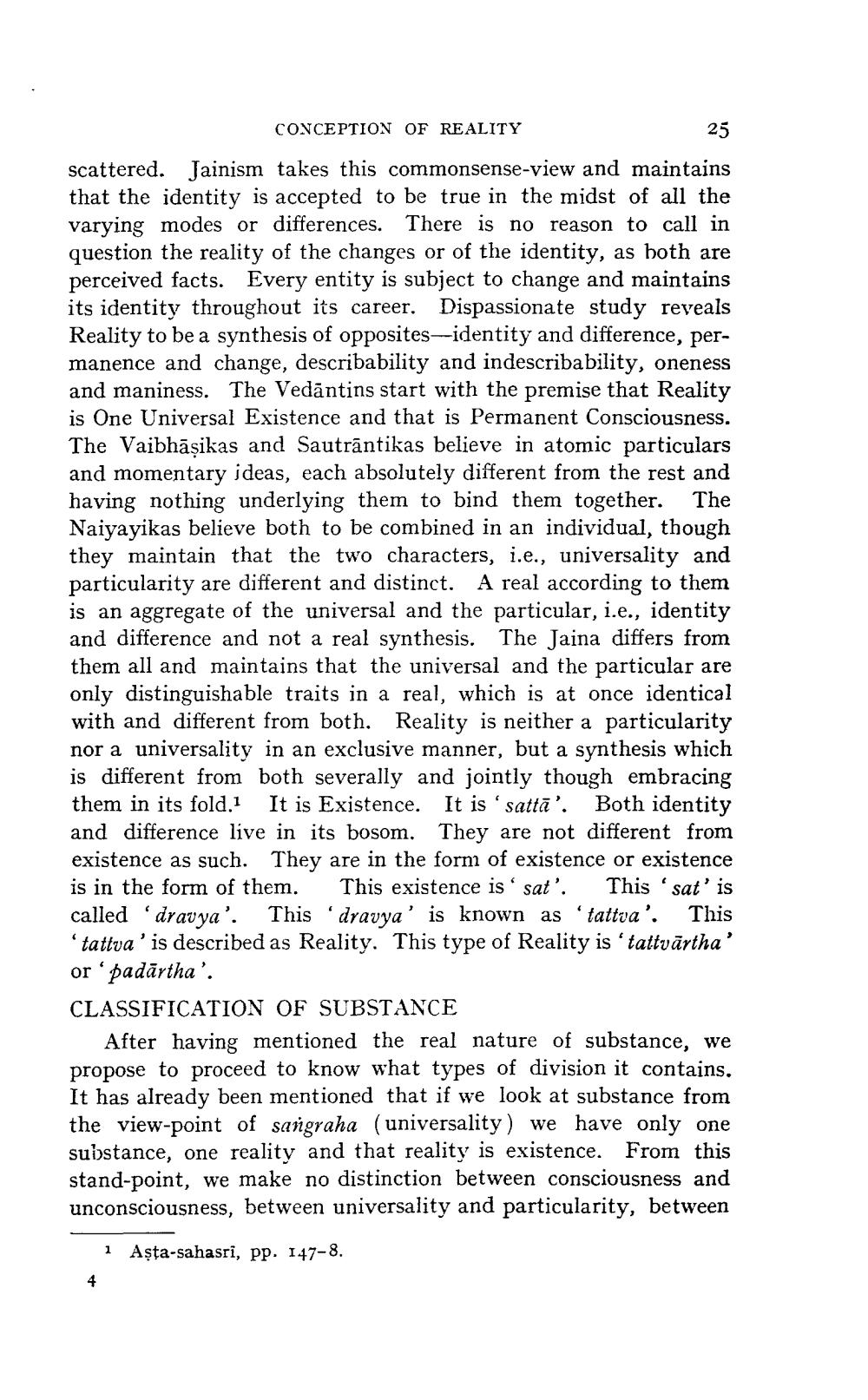________________
CONCEPTION OF REALITY
25
scattered. Jainism takes this commonsense-view and maintains that the identity is accepted to be true in the midst of all the varying modes or differences. There is no reason to call in question the reality of the changes or of the identity, as both are perceived facts. Every entity is subject to change and maintains its identity throughout its career. Dispassionate study reveals Reality to be a synthesis of opposites--identity and difference, permanence and change, describability and indescribability, oneness and maniness. The Vedāntins start with the premise that Reality is One Universal Existence and that is Permanent Consciousness. The Vaibhāşikas and Sautrāntikas believe in atomic particulars and momentary ideas, each absolutely different from the rest and having nothing underlying them to bind them together. The Naiyayikas believe both to be combined in an individual, though they maintain that the two characters, i.e., universality and particularity are different and distinct. A real according to them is an aggregate of the universal and the particular, i.e., identity and difference and not a real synthesis. The Jaina differs from them all and maintains that the universal and the particular are only distinguishable traits in a real, which is at once identical with and different from both. Reality is neither a particularity nor a universality in an exclusive manner, but a synthesis which is different from both severally and jointly though embracing them in its fold.1 It is Existence. It is 'sattā'. Both identity and difference live in its bosom. They are not different from existence as such. They are in the form of existence or existence is in the form of them. This existence is' sat'. This 'sat' is called 'dravya'. This 'dravya' is known as 'tattva'. This 'tattva' is described as Reality. This type of Reality is 'tattvārtha' or 'padārtha'. CLASSIFICATION OF SUBSTANCE
After having mentioned the real nature of substance, we propose to proceed to know what types of division it contains. It has already been mentioned that if we look at substance from the view-point of savgraha (universality) we have only one substance, one reality and that reality is existence. From this stand-point, we make no distinction between consciousness and unconsciousness, between universality and particularity, between
1 Aşta-sahasri, pp. 147-8.
4




